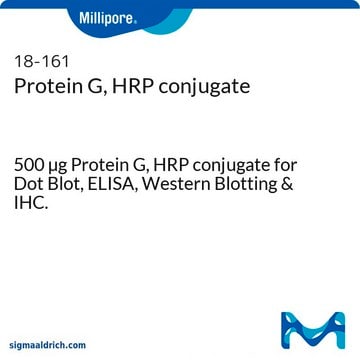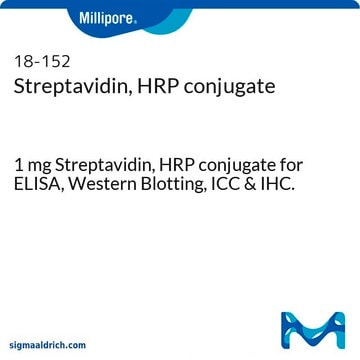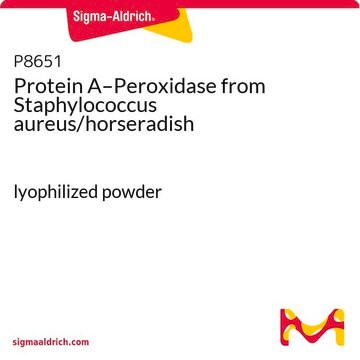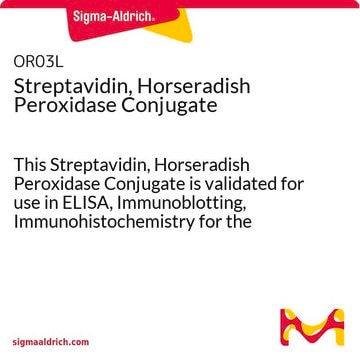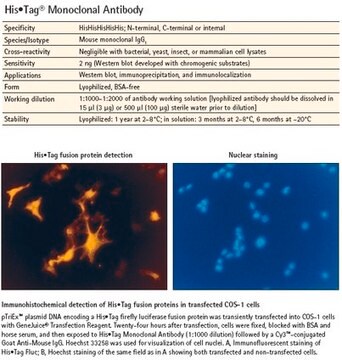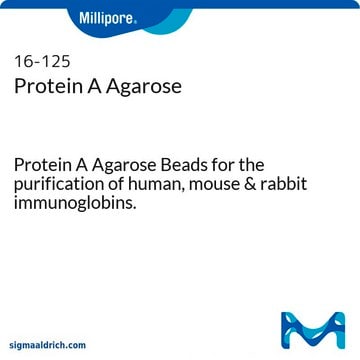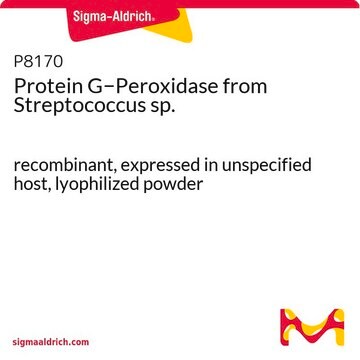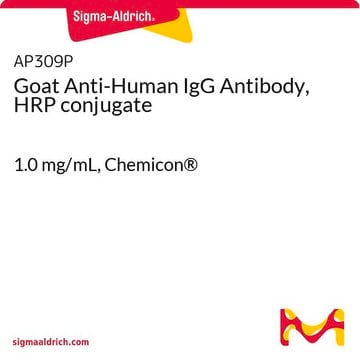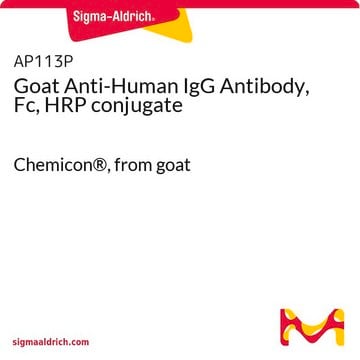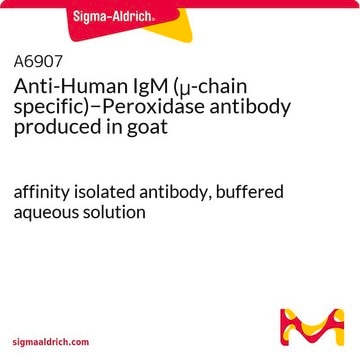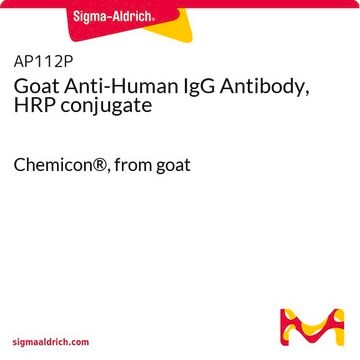18-160
Protein A, HRP conjugate
1 mg Protein A, HRP conjugate for Dot Blot, ELISA, Western Blotting & IHC.
Synonym(s):
detection reagent
Sign Into View Organizational & Contract Pricing
All Photos(1)
About This Item
UNSPSC Code:
41105332
eCl@ss:
32160405
NACRES:
NB.22
Recommended Products
form
solid
manufacturer/tradename
Upstate®
technique(s)
ELISA: suitable
dot blot: suitable
immunohistochemistry: suitable
western blot: suitable
shipped in
wet ice
Application
Suitable for immunoblotting (western or dot blot), ELISA, immunoperoxidase electron microscopy, and immunohistochemistry.
Physical form
chromatographically pure Protein A conjugated to horseradish peroxidase lyophilized from 0.02 M Potassium Phosphate, 0.15M NaCl, pH 7.2, 10 mg/ml BSA- Immunoglobulin and Protease free
Storage and Stability
Lyophilized: Stable for 2 years at -20°C from date of shipment. Rehydrated: Stable for 6 months at -20°C.
Legal Information
UPSTATE is a registered trademark of Merck KGaA, Darmstadt, Germany
Disclaimer
Unless otherwise stated in our catalog or other company documentation accompanying the product(s), our products are intended for research use only and are not to be used for any other purpose, which includes but is not limited to, unauthorized commercial uses, in vitro diagnostic uses, ex vivo or in vivo therapeutic uses or any type of consumption or application to humans or animals.
Storage Class Code
11 - Combustible Solids
WGK
WGK 3
Certificates of Analysis (COA)
Search for Certificates of Analysis (COA) by entering the products Lot/Batch Number. Lot and Batch Numbers can be found on a product’s label following the words ‘Lot’ or ‘Batch’.
Already Own This Product?
Find documentation for the products that you have recently purchased in the Document Library.
Customers Also Viewed
Om Prakash et al.
Indian journal of microbiology, 57(2), 218-225 (2017-06-15)
An endophytic species of Micrococcus was isolated from Aloe vera leaf (syn. Aloe barbadensis) and screened for protease production with five other species of Micrococcus. Data indicated that endophytic Micrococcus aloeverae AE-6 MCC 2184T and Micrococcus yunnanensis DSM 21948T showed
Fabrizio Piazza et al.
Annals of neurology, 73(4), 449-458 (2013-04-30)
Cerebral amyloid angiopathy-related inflammation (CAA-ri) is characterized by vasogenic edema and multiple cortical/subcortical microbleeds, sharing several aspects with the recently defined amyloid-related imaging abnormalities (ARIA) reported in Alzheimer's disease (AD) passive immunization therapies. Herein, we investigated the role of anti-amyloid
Xiaohong Liu et al.
The Journal of biological chemistry, 291(16), 8440-8452 (2016-01-31)
T cell activation following antigen binding to the T cell receptor (TCR) involves the mobilization of intracellular Ca(2+) to activate the key transcription factors nuclear factor of activated T lymphocytes (NFAT) and NF-κB. The mechanism of NFAT activation by Ca(2+)
Anita Hryniewicz-Jankowska et al.
International journal of molecular sciences, 22(4) (2021-02-13)
Inhibition of the protein neddylation process by the small-molecule inhibitor MLN4924 has been recently indicated as a promising direction for cancer treatment. However, the knowledge of all biological consequences of MLN4924 for cancer cells is still incomplete. Here, we report
Jennifer Deborah Wuerth et al.
Journal of virology, 92(23) (2018-09-21)
Sandfly fever Sicilian virus (SFSV) is one of the most widespread and frequently identified members of the genus Phlebovirus (order Bunyavirales, family Phenuiviridae) infecting humans. Being transmitted by Phlebotomus sandflies, SFSV causes a self-limiting, acute, often incapacitating febrile disease ("sandfly
Our team of scientists has experience in all areas of research including Life Science, Material Science, Chemical Synthesis, Chromatography, Analytical and many others.
Contact Technical Service